By Eric Vandenbroeck and co-workers
The Land That Is Israel
Many decades ago we
drew attention to the fact that Mark Twain that time a newspaper reporter by profession,
reported what is the oldest evidence of what Palestine/Israel initially looked like.
Now Antonio Guterres,
the secretary-general of the United Nations (UN), said in his address to the Security
Council that the Hamas attack, in which 1,200 mostly Israelis were killed and
250 taken hostage, did not happen in a vacuum. “The Palestinian people
have been subjected to 56 years of suffocating occupation,” he noted. He
immediately added that: “The grievances of the Palestinian people cannot
justify the appalling attacks by Hamas. And those appalling attacks cannot
justify the collective punishment of the Palestinian people.” , Israel’s
ambassador to the UN (of Romanian Jewish and Hungarian Jewish descent), responded with an alleged vicious personal attack on the
secretary-general.
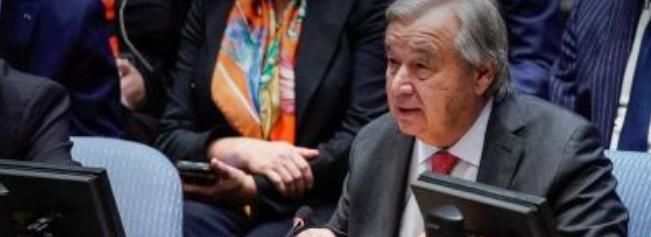
The Gaza Strip is the
name given to the southern part of the coastal plain of Palestine,
adjoining Egypt. It was part of Palestine during the British Mandate which ended in May 1948.
Explaining the
opinion of Antonio Guterres under the 1947 UN partition plan, this
area was to form part of the Palestinian Arab state, but this state did not
materialize. During the 1948 war for Palestine, the Egyptian army captured this
semi-desert strip. The 1949 Israeli-Egyptian armistice agreement left this area
on the Egyptian side of the new international border. Egypt did not annex the
territory but kept it under military rule, pending resolution of the
Arab-Israeli conflict.
The strip is 25 miles
long and four to nine miles wide, with a total area of 141 square miles. In the
course of the 1948 war, more than 200,000 Palestinian refugees were added to a
population of around 70,000, creating a massive humanitarian problem. UNRWA
(the United Nations Relief and Works Agency) was set up to provide food,
education, and health services to the refugees.
Israel occupied the Gaza Strip in the course of the Suez War of
October-November 1956, but was forced by international pressure to vacate it in
March 1957. A large number of civilians were killed, and atrocities were
committed by the Israeli army during its short-lived occupation of the
territory in what was a foretaste of things to come.
In June 1967, Israel occupied the Gaza Strip, the West Bank, including East
Jerusalem, the Golan Heights, and the Sinai peninsula. It withdrew from Sinai
in 1981 as part of its peace deal with Egypt.
In August 2005,
Israel withdrew its soldiers and settlers from the Gaza Strip. Israeli
spokespersons claimed that by withdrawing they gave the Palestinians in Gaza an
opportunity to turn the enclave into the Singapore of the Middle East.
This claim is utterly
preposterous when compared with the grim reality, but it is quite typical of
Israeli propaganda.
The reality is that
between 1967 and 2005, a classic colonial situation prevailed in the Gaza
Strip. A few thousand Israeli settlers controlled 25 percent of the territory,
40 percent of the arable land, and the largest
share of the
desperately scarce water resources.
The Gaza Strip is not
backward and impoverished because its residents are lazy but because Israel’s
rapacious colonial regime did not give it a chance to flourish. Economic
progress was thwarted by a deliberate Israeli strategy of “de-development”.
Sara Roy, a Jewish
scholar at Harvard, the daughter of Holocaust survivors, is the leading expert
on the Gaza Strip. She has written four books on Gaza. The first and
ground-breaking book was called The Gaza Strip: The Political
Economy of De-development. In
this book, she coined the term and formulated the pivotal concept of
de-development.

Her powerful thesis is
that the dire state of Gaza is not the result of objective conditions but of a
deliberate Israeli policy of keeping it underdeveloped and dependent. Despite
considerable opposition from the scholarly community when she first introduced
the concept, it has become widely used and part of the lexicon in political
science and other disciplines. The book shows in detail the various measures by
which Israel systematically thwarted the growth of industry in the Gaza Strip
and exploited the enclave as a source of cheap labor, as well as a market for
its own goods.
'Demographic Time Bomb'
There were three
principal reasons for the decision of the right-wing Likud government, headed
by Ariel Sharon, to withdraw from Gaza in 2005. One is that Hamas, the Islamic
resistance movement, launched attacks against Israel’s settlers and soldiers
and, as a result, the price of occupying Gaza outstripped the benefits.
The game was no
longer worth the candle.
A second aim of the
move was to sabotage the Oslo peace process. As Dov Weissglas,
Sharon’s chief of staff, explained in
an interview with
Haaretz on 6 October 2004:
"The
significance is the freezing of the political process. And when you freeze that
process you prevent the establishment of a Palestinian state and you prevent a
discussion about the refugees, the borders and Jerusalem. Effectively, this
whole package that is called the Palestinian state, with all that it entails,
has been removed from our agenda indefinitely… The disengagement is actually
formaldehyde. It supplies the amount of formaldehyde that’s necessary so that
there will not be a political process with the Palestinians."
The third reason
for disengagement had to do with demography. Palestinians have a
higher birth rate than Israelis and this is perceived as a threat, a "demographic time bomb" as some Israelis
call it.
The Likud
government in Israel decided to withdraw unilaterally from Gaza. By withdrawing
from Gaza, it removed, or thought it removed, in one stroke, 1.4 million
Palestinians from the overall demographic equation.
Sharon claimed that
by withdrawing from Gaza, his government was making a contribution toward peace
with the Palestinians. But this was a unilateral Israeli move undertaken solely
in what was considered to be the Israeli national interest.
The nature of the
move was revealed by its official name: “The unilateral disengagement from
Gaza.” Disengagement from Gaza was not the prelude to further withdrawals from
the West Bank and it most emphatically was not a contribution to peace.
The houses that were
abandoned in Gaza were demolished by bulldozers in what amounted to a scorched
earth policy. The controlling consideration behind the move was to divert
resources from Gaza in order to safeguard and consolidate the more significant
Israeli settlements in the West Bank.
In the year after
withdrawing its 8,000 settlers from Gaza, the Likud government introduced
12,000 new settlers into the West Bank. Today, there are over 700,000 settlers
in the West Bank, including East Jerusalem. The 2005 move was not coordinated
with the Palestinian Authority.
The long-term aim of
the Sharon government was to redraw unilaterally the borders of Greater Israel.
One step in this overall strategy was the disengagement from Gaza. The other
step was the building of the so-called security barrier on the West Bank. The
security barrier was in fact as much about land-grabbing as it was about
security. It was said to be a temporary security measure, but it was intended
to delineate the final borders of Greater Israel.
The two moves were
anchored in a fundamental rejection of Palestinian national rights. They
reflected a determination to prevent the Palestinians from ever achieving
independence on their own land. Denying access between the Gaza Strip and the
West Bank was a means of obstructing a unified Palestinian struggle for
independence. At the tactical level, withdrawing from Gaza enabled the Israeli
Air Force to bomb the territory at will, something they could not do when
Israeli settlers lived there.
Hamas's Election Victory
Following the Israeli
withdrawal from Gaza, Hamas moderated its programme and turned to
the ballot box as the road to power. Its 1988 charter was considered
antisemitic. But in its platform for the January 2006 elections, it tacitly
accepted Israel’s existence and lowered its sights to an independent
Palestinian state along the 1967 lines.
However, Hamas did
not agree to sign a formal peace treaty with Israel, and it insisted on the
right of return of the 1948 refugees, widely seen as a codeword for dismantling
Israel as a Jewish state.
Hamas won a clear
victory in a fair and free election not just in Gaza, but in the West Bank as
well. Having won an absolute majority of seats in the Palestinian legislative
council, Hamas proceeded to form a government in accordance with customary
democratic procedure.
The Hamas victory
came as an unpleasant surprise for Israel and its western supporters. Israel
refused to recognize the new government and resorted to economic warfare to
undermine it. The United States and the European Union, to their eternal shame,
followed Israel’s example in refusing to recognize the democratically elected
government and joined Israel in economic warfare to undermine it.
This is just one
example, one among many, of western hypocrisy on Israel-Palestine. The western
leaders claim that they believe in democracy and that their objective around
the world is democracy promotion. They invaded Iraq in 2003 in the name of democracy and ended up
destroying the country and causing hundreds of thousands of casualties.
The western military
interventions in Afghanistan, Syria and Libya also used democracy as a camouflage for their
imperial ambitions, and all of them ended in dismal failure. Democracy needs to
be built by the people from the ground up; it cannot be imposed by a foreign
army from the barrel of a tank.
Palestine was a
shining example of democracy in action. With the possible exception of Lebanon,
it was the only genuine - as opposed to sham - democracy in the Arab world.
Under the incredibly difficult conditions imposed by coercive military
occupation, the Palestinians succeeded in building a democratic political
system. The Palestinian people had spoken, but Israel and its western allies
refused to recognise the result of the election
because the people had voted for the “wrong” party.
In March 2007, Hamas
formed a national unity government with Fatah, the mainstream party that came
second in the ballot box. It was a moderate government which consisted mainly
of technocrats rather than politicians. Hamas invited its coalition partner to
negotiate with Israel a long-term hudna or truce.
Much more significant
than the offer of a long-term truce was Hamas’s acceptance of a two-state
settlement (with the implicit de facto recognition of Israel). This acceptance
was already hinted at in the Cairo declaration of 2005, the “prisoners’ document”
of 2006, and the Mecca accord between Hamas and Fatah of 2007.
Hamas
all-but-explicitly endorsed a two-state settlement and, as the then UN Middle
East Envoy Alvaro de Soto observed, it could have evolved further - if only its
overtures had not met with flat dismissal and rejection from Israel and its
allies. Nevertheless, Hamas leaders continued to make it clear, in countless
subsequent statements, that they would accept a Palestinian state based on the 1967 borders.
Cruel Blockade?
Not content with
dismissing Hamas’s call for a hudna and its offer of negotiations for a two-state
settlement, Israel entered into a plot to topple the national unity government
and oust Hamas from power.
In 2008, a leak of memos
from the Israel-Palestinian Authority negotiations showed that Israel and the
US armed and trained the security forces of President Mahmoud Abbas, with the
aim of overthrowing the Hamas government.
Later, the
“Palestine papers”, a cache
of 1,600 diplomatic documents leaked to Al Jazeera, provided more details. They
revealed that a secret committee was formed called the Gaza Committee. It had
four members: Israel, America, Fatah, and Egyptian intelligence. The aim of
this committee was to isolate and weaken Hamas and to help Fatah stage a coup
in order to recapture power.
Hamas decided to
pre-empt the Fatah coup. It seized power violently in Gaza in June 2007. Since
then, the two branches of the Palestinian national movement have been divided,
with Hamas ruling over the Gaza Strip from Gaza City and the Palestinian Authority,
dominated by Fatah, governing the West Bank from Ramallah.
The Palestinian
Authority, funded mainly by the European Union and, to a lesser extent, by the
United States, functions essentially as a sub-contractor for Israeli security.
It is corrupt, incompetent, and impotent.
As a result, it
enjoys little legitimacy in the West Bank and even less in the Gaza Strip.
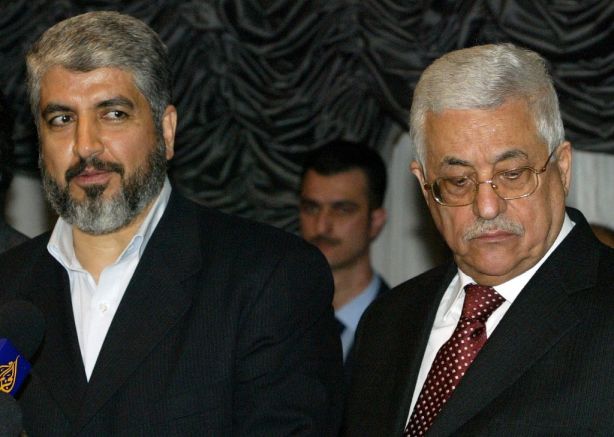
Hamas exiled
political supremo Khaled Meshaal (L) and Palestinian president Mahmoud Abbas
give a press conference in Damascus, 21 January 2007
Israel’s response to
the Hamas seizure of power was to intensify a blockade on Gaza. The US, UK, and
other European allies participated in this cruel blockade. The blockade has now
been in force for 17 years. It inflicts daily hardship on the inhabitants of
the Strip. It involves Israeli control not only of the imports but also of all
exports from Gaza, including agricultural goods.
The blockade of Gaza
is not only cruel and inhumane but plainly illegal. A blockade is a form of
collective punishment, which is explicitly proscribed by international law. And
yet the international community has totally failed to hold Israel to account for
this and the rest of its illegal actions. Israel denies that it is an occupying
power of the Gaza Strip.
However, the UN, the
International Committee of the Red Cross (ICRC), Amnesty International, and
Human Rights Watch all concluded that Israel remains in “effective occupation”,
despite its physical withdrawal, because it continues to control access to the
territory by land, sea and air.
Having been denied
the fruits of its electoral victory, Hamas resorted to the weapon of the weak,
to what Israel calls terrorism, and this took the form of rocket attacks from
Gaza on southern Israel. The Israeli army retaliated by bombing Gaza; a tit-for-tat
ensued and the inevitable escalation of hostilities. In June 2008, Egypt
brokered a ceasefire between Israel and Hamas.
The ceasefire worked
remarkably well. In the six months before June, the average number of rockets
fired on Israel was 179 per month. In the following months, the average fell to
three rockets a month. On 4 November 2008, the Israeli military launched a raid
into Gaza, killed six Hamas fighters, and killed the ceasefire, leading to an
immediate resumption of hostilities.
Hamas offered to
renew the ceasefire on its original terms, which included the easing of the
blockade. Israel refused the offer and prepared to renew the fight. Hamas has
an impeccable record of observing ceasefires whereas Israel does not. Every
ceasefire brokered by Egypt was violated by Israel when it outlived its
usefulness.
Operation Cast Lead
Israel launched its
first major military offensive in Gaza on 27 December 2008, naming it Operation
Cast Lead. The reason given for the attack was self-defence.
Israel, like any other country, it was claimed, has the right to defend itself
and to protect its citizens.
In other words,
Israel claimed the right to self-defense against the people it occupied and
oppressed. However, if all Israel wanted was to protect its citizens, it did
not have to resort to force. All it had to do was to follow Hamas’s good
example and observe the ceasefire. Israel repeatedly invokes its right to
self-defense but, under international law, self-defense does not apply if you
are an illegal military occupier.
Operation Cast Lead
was also the first major Israeli assault on the people of Gaza, and I use the
words “people of Gaza” deliberately. Israel claims that Hamas uses civilians as
human shields and that this makes them legitimate military targets.
In a crowded enclave,
however, it is inevitable that some Hamas command centers, tunnels, and
weapons stores are located near civilian buildings. That is not the same as
using civilians as human shields. Many of the Israeli claims that Hamas uses schools,
hospitals, mosques, and UNRWA buildings as cover for its operations have turned
out to be untrue.
On the other hand,
the claim that the Israeli military goes to great lengths to avoid hurting
innocent civilians is flatly contradicted by the evidence. Its offensive
inflicted very heavy casualties and massive damage to the civilian
infrastructure. It established a pattern of regular incursions to hit Hamas,
incursions that invariably rain down death and destruction on the civilian
population.
The United Nations
Human Rights Council appointed a commission of inquiry into Operation Cast
Lead. It was headed by the eminent South African judge, Richard Goldstone. The
Goldstone team noted that both sides were guilty of war crimes but reserved its
severest criticisms for Israel because of the scale and seriousness of its war
crimes.
To give just one
example, Goldstone and his colleagues found seven incidents in which Israeli
soldiers shot civilians leaving their homes, holding a white flag.
The report concluded
that the attacks in 2008-2009 were directed, at least in part, at the people of
Gaza as a whole. It was “a deliberately disproportionate attack designed to
punish, humiliate, and terrorize a civilian population”.
During the
second Lebanon war of 2006, Israel's military chief of general
staff, Gadi Eizenkot, enunciated a policy of deliberately harming enemy
civilians which became known as the “Dahiya doctrine”. The doctrine was named
after the Dahiya neighbourhood of Beirut,
where Hezbollah was headquartered during the war.
It encompassed the destruction
of civilian infrastructure in order to deny its use to the enemy, and it
endorsed the use of “disproportionate force” to achieve that end. It was not,
however, until 2023 that the horrific humanitarian consequences of this
doctrine became evident to anyone with eyes to see.
'Designed To Punish, Humiliate'
Operation Cast Lead
was followed by further Israeli attacks on the Gaza Strip in 2012, 2014, 2021,
2022 and 2023.
Operation Swords of
Iron is the sixth Israeli military offensive in Gaza in 15 years, and it is by
far the most lethal and destructive. After two months of fighting, the
Palestinian death toll had risen to at least 17,700, including 7,729 children
and 5,153 women, with more than 48,700 injured - more than the total of the
previous military offensives combined.
A further 265
Palestinians were killed in the West Bank by the Israeli military and armed
settlers. Nearly 1.9 million people, equivalent to 85 percent of a population
of 2.3 million, were internally displaced. Heavy Israeli bombardment reduced entire neighbourhoods to rubble and inflicted catastrophic
damage on the civilian infrastructure and economy of Gaza.
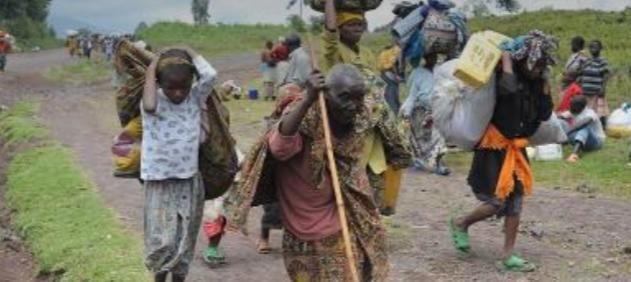
UN staff who assisted
the Palestinians were another casualty of this savage Israeli offensive. More than
130 UNRWA teachers, health workers and aid workers were killed - the highest
number in any conflict in the UN’s history.

A medic inspects the
damage in a children's ward following Israeli bombardment of Nasser hospital in
Khan Younis, southern Gaza Strip, on 17 December 2023.
The UN Office for the
Coordination of Humanitarian Affairs (OCHA) estimates that Israeli attacks
destroyed more than 52,000 housing units and damaged more than 253,000. At
least 60 percent of Gaza’s homes have been damaged or destroyed.
By 12 November, OCHA
reported, 279 educational facilities had been damaged, more than 51 percent of
the total, with none of Gaza’s 625,000 students able to access education. More
than half of Gaza’s hospitals and nearly two-thirds of primary healthcare centres were out of service and 53 ambulances were damaged.
All 13 hospitals in
Gaza City and northern Gaza had received evacuation orders from the Israeli
military. Water consumption had fallen by 90 percent since the war started.
People were queuing for an average of 4-6 hours to receive half the normal
bread ration.
Around 390,000 jobs
had been lost since the start of the war. Before the war the jobless rate
already stood at 46 percent, and 70 percent among youth. The socioeconomic
impact of the war has been nothing short of catastrophic. It is difficult to
avoid the conclusion that, as in Operation Cast Lead, Operation Swords of Iron
was “a deliberately disproportionate attack designed to punish, humiliate, and
terrorize a civilian population”.
Israeli generals
frequently use the same phrase to describe their recurrent operations in Gaza:
“Mowing the lawn.” What this means is that they have no political solution to
the problem of Gaza.
So every few years
they move in with foot soldiers, tanks, artillery, navy, and aircraft, smash up
the place, degrade the military capabilities of Hamas, pulverize the civilian
infrastructure, and then go home and leave the political problem completely unresolved.
“Mowing the lawn” is
a chilling metaphor, because it describes a mechanical action that you do
periodically every few years and with no end in sight. Under this template,
there is no end to the bloodshed, and the next war is always around the corner.
This is not a policy for dealing with Gaza; it is a non-policy. To put it
differently, it is an inappropriate military response to what essentially is a
political problem.
There is a popular
Israeli saying: if force does not work, use more force. This is an asinine idea
- if force does not work, it is because it is an unsuitable instrument for
dealing with the problem at hand. It can also be counterproductive.
Israel’s
disproportionate, excessive use of military force in the past ended up
encouraging the rise of Hezbollah in Lebanon and of Hamas in the Gaza Strip.
Israel’s policy of assassinating Hamas leaders with the aim of decapitating the
organization has never worked. The dead leaders are quickly replaced by younger
leaders who are usually more militant.
The government formed
by Benjamin Netanyahu at the end of 2022 is the most radical, right-wing,
xenophobic, expansionist, overtly racist - and the most incompetent -
government in Israel’s history. It is also the most explicitly pro-settler,
Jewish supremacist government.
The policy guidelines
of this government assert that “the Jewish people have an exclusive and
inalienable right to all parts of the Land of Israel”. In other words, only
Jews have a right to the whole land of Israel, which includes the West Bank.
Palestinians have no national rights. This extreme and uncompromising position
makes bloodshed inevitable because it leaves the Palestinians no peaceful
avenue for realizing their right to national self-determination.
'A Slave Rebellion'
In the period since 7
October, Israel announced a new war aim, namely to eliminate Hamas altogether
as a political and military force. Israeli leaders began to speak of
“dismantling Hamas once and for all” or “eradicating” Hamas. To anyone familiar
with the history of Israel-Gaza relations, this aim comes as a surprise. It
definitely represents an abrupt reversal of Netanyahu’s previous policy.
Whereas some Israeli
leaders prefer having a unified collaborator PA administration in Gaza and the
West Bank, Netanyahu was content with the status quo of different regimes in
Gaza and the West Bank. Here is what he reportedly said to his Likud colleagues
in March 2019: “Anyone who wants to thwart the establishment of a Palestinian
state has to support bolstering Hamas and transferring money to Hamas… This is
part of our strategy - to isolate the Palestinians in Gaza from the
Palestinians in the West Bank.”
On 7 October, the
cynical policy of Netanyahu's, of preserving the status quo in the occupied
territories by a tactic of divide and rule, collapsed spectacularly. His policy
was to keep the Palestinian Authority weak, to allow Israel a free hand to do
whatever it liked on the West Bank, and to keep the Palestinians in Gaza cooped
up in the open-air prison. It was a policy of containment that ultimately
failed to contain.
On 7 October, the
inmates broke out of the prison. In the words of Norman Finkelstein, the
breakout was akin to a slave
rebellion. Fighters of Hamas
and Islamic Jihad broke down the fence and went on a killing spree in southern
Israel. First, they attacked a military base, then kibbutzim and settlements
around the borders of Gaza.
They killed about 350
soldiers, and more than 800 civilians, and the carnage was accompanied by
terrible atrocities. They also took 250 hostages, both soldiers and civilians.
This was a game-changer: the first time Hamas conducted a large-scale attack by
land inside Israel. It was a horrific and totally unexpected attack that traumatised the whole of Israeli society.
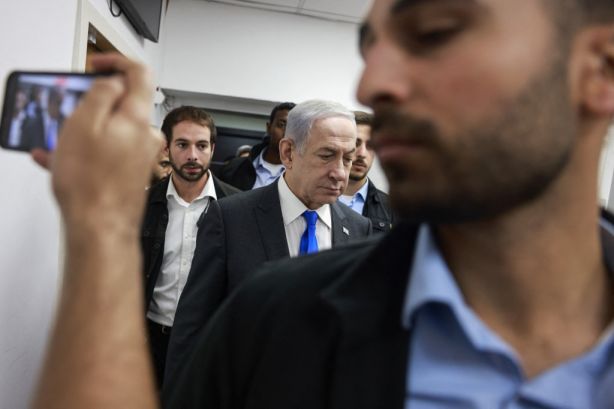
Israeli Prime
Minister Benjamin Netanyahu arrives for a cabinet meeting at the Israeli
Ministry of Defence, Tel Aviv, 17 December 2023
On the Israeli side,
this was more than an intelligence failure; it was a policy failure of the highest
magnitude. For years, Netanyahu had been saying to the Israeli public that the
Palestinians are finished, that they are defeated, that Israelis can do
whatever they like on the West Bank, that they can forget Gaza, and achieve
peace with the Arab states without making any concessions to the
Palestinians.
The 2020-2021 Abraham
Accords between Israel
and Bahrain, the United Arab
Emirates, Morocco
and Sudan seemed to vindicate Netanyahu. They yielded what
he wanted: peace for peace without any price being paid by Israel, without any
concessions on the Palestinian issue.
The accords were a
betrayal of the collective Arab position on the Palestinian issue. This
position was adopted by the Arab League summit in Beirut in March 2002, and it
became known as the Arab Peace Initiative. It offered Israel peace and normalisation with all 22 members of the Arab League in
return for agreeing to an independent Palestinian state along the 1967 lines
with a capital city in East Jerusalem.
Israel ignored the
offer. The Abraham Accords amounted to a very different kind of a deal for
Israel and a stab in the back to the Palestinian national movement. They were
sponsored by the United States as part of a misguided policy of promoting
stability in the Middle East by cooperating with authoritarian Arab regimes and
Israel while bypassing the Palestinians.
PA's Craven Subservience
The
Hamas attack announced loud and clear that the Palestinian issue is not dead
and that Palestinian resistance to the Israeli occupation is far from over. One
of its aims was to deter Saudi Arabia from concluding a peace treaty with Israel.
Under strong American pressure, Saudi Arabia came very close to signing an
Abraham accord with
Israel.
In the Arab world, as
in the West, there is a disconnect between the governments and the people on
Israel-Palestine. The governments value their relationship with America and
Israel; the Arab street remains strongly pro-Palestinian regardless of the shifting
geopolitics of the region. The Hamas attack, by rekindling popular support for
the Palestinian cause throughout the Arab and Islamic worlds, forced the Saudis
to think again.
The 7 October attack
also highlighted the contrast between the craven subservience of the PA to
Israel and America and the Islamic resistance to the occupation spearheaded by
Hamas. The PA has been totally ineffective in protecting the people of the West
Bank against Israeli land grabs, ethnic cleansing, escalating settler violence,
and ever-increasing provocations in and around al-Aqsa mosque in the Old City
of Jerusalem, one of the three holiest sites of Islam alongside Mecca and
Medina.
Al-Aqsa is of the
greatest importance to Muslims as a religious symbol and this is precisely why
the encroachment by the Netanyahu government and by its Jewish fundamentalist
followers is so incendiary. By its attack of 7 October, Hamas signaled to Israel
that these provocations would no longer be tolerated. It was for this reason
too that the operation was named the Al-Aqsa Deluge. All in all, it was a
powerful assertion of Palestinian agency and leadership in the ongoing struggle
against the Israeli occupation.
The Hamas attack left
Netanyahu’s entire policy in tatters, and he will probably pay the political
price for the intelligence and security failures. Before 7 October, there were
massive protests in Israel against his plan for judicial overhaul. The protests
did not cease altogether following the Hamas attack but the situation in Gaza
became the dominant issue. It did not take long for the families of the
hostages to start a vigil outside the prime minister’s residence in Jerusalem.
After the dust
settles, all the anger will be redirected at Netanyahu. In the face of mounting
international calls for an immediate ceasefire, he remains defiant. He knows
that once the war against Hamas comes to an end, his days in office will be
numbered. Politically speaking, Netanyahu looks like a dead man walking.
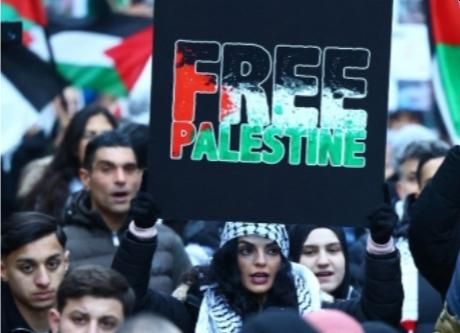
What is clear is that
Netanyahu’s new policy of eradicating Hamas has no chance of succeeding. Hamas
has a military wing, the Izz ad-Din al-Qassam Brigades, which commits terrorist
acts when it targets Israeli civilians. Even if all its commanders are killed,
they would be quickly replaced by new recruits and more militant ones. But
Hamas is also a political party with institutions and a social movement with
many branches such as a women’s association and a students’ association. It is
part of the fabric of Palestinian society. What is more, Hamas is a set of
ideas, including the idea of freedom and self-determination for the Palestinian
people. Military force can decimate an organisation,
but it cannot kill an idea.
With characteristic
hubris, Netanyahu announced that he was determined to destroy Hamas not only to
ensure his own country’s security but also to free the people of Gaza from
Hamas’s tyranny. His indiscriminate use of force, however, does not weaken Hamas;
it strengthens it. By relying on brute military force alone, he weakens those
Palestinian leaders who advocate negotiations and believe that Palestinians
need only behave nicely for the world to sit up and listen. Nor is Hamas
identical to the Islamic State (IS) group, as Netanyahu and an ever-increasing
number of his ministers keep claiming. IS is an organisation with a nihilist global agenda. Hamas, by
contrast, is a regional organisation with a limited
and legitimate political agenda.
On 2 June 1948, Sir
John Troutbeck, a senior official in the UK Foreign Office, wrote a memo to
Foreign Secretary Ernest Bevin. He complained that by their support for the
creation of Israel, the Americans helped to create a “gangster state with a
thoroughly unscrupulous set of leaders”.
Whether Israel
behaves like a gangster state is open to debate, but Netanyahu is without doubt
a thoroughly unscrupulous leader. As he directed Israel’s 2023 assault on Gaza,
Netanyahu was also on trial for three serious corruption charges, and he knew that
if convicted, he might end up in prison. The imperative of personal political
survival helped to shape his conduct of the war.
Netanyahu’s Motives
Yet Netanyahu’s
motives for prolonging the war in Gaza went deeper than self-preservation. His
life’s mission has been to defeat the Palestinian national movement and to
prevent the emergence of an independent Palestinian state alongside Israel.
He grew up in a
fiercely nationalistic Jewish home. His father, Benzion Netanyahu, was the
political secretary of Ze’ev Jabotinsky, the spiritual father of the Israeli
right and the chief architect of the strategy of the “iron wall.” In 1923,
Jabotinsky published an article under the title “On the Iron Wall (We and the
Arabs).” In it, he argued that the Zionist goal of an independent Jewish state
in Palestine could only be achieved unilaterally and by military force.
A Jewish state could
only be established not by negotiations with the Arabs of Palestine but behind
an iron wall of Jewish military power. The essence of the strategy was
negotiations from strength. Once the Arabs gave up hope of defeating the Jews
on the battlefield, then would come the time for stage two, for negotiating
with them about their status and rights in Palestine.
Israeli Prime
Minister Yitzhak Rabin moved from stage one to stage two of the
strategy by signing the Oslo accord with the PLO in 1993, though he never
conceded any Palestinian national rights
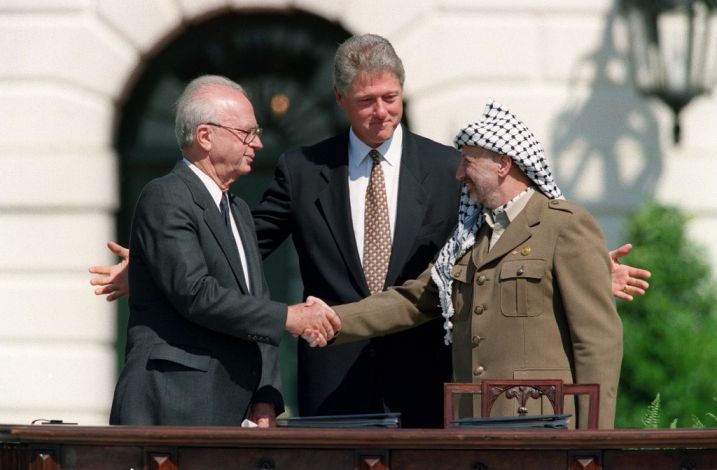
Yasser Arafat (R) and
Yitzhak Rabin (L) shake hands watched by US President Bill Clinton on 13
September 1993 at the White House after the signing of the Oslo accord
Netanyahu came to
power in 1996, following the assassination of Rabin, with the explicit mission
of subverting the Oslo Accords and preventing the establishment of a
Palestinian state. He was fixated on the first part of the iron wall strategy,
on accumulating more and more military power, and avoiding stage two:
negotiations of any kind.
Until 7 October, his
strategy was to drive a firm wedge between Gaza and the West Bank and to allow
a weak Hamas to govern Gaza. After 7 October, he was determined to destroy
Hamas but without allowing the PA to extend its writ to Gaza, because that would
strengthen the case for a two-state solution.
A century ago,
Jabotinsky enunciated his sophisticated iron wall strategy of using military
power as a means to a political settlement of the conflict.
In 2023, Netanyahu pursued
a crude version of the strategy, of using Jewish military power not to resolve
the conflict but to keep the Palestinians in the West Bank and Gaza in a
permanent state of subordination to a Jewish supremacist state. His declared
aim is to ensure security for Israel for the long-term. His undeclared aim is
to end forever the prospect of Palestinian independence.
Depicting The Palestinians As Nazis
One disturbing aspect
of the Israeli response to the horrific Hamas attack is the dehumanizing of the
Palestinian people. This is nothing new. On one occasion, Netanyahu famously
suggested that it was Haj Amin al-Husseini, the leader of the Palestinian National
Movement, who suggested to Hitler that instead of expelling the Jews from
Germany, he should exterminate them. One of Netanyahu’s most often repeated and
most morally repugnant claims is that Palestinian nationalism is a direct
continuation of Nazi antisemitism.
Today, many Israeli
ministers depict the Palestinians as Nazis. Yoav Galant, the defense minister,
referred to the enemy as “human animals”, and used this view to justify the inhuman siege
that he imposed, the cutting off of water, food, fuel and medical supplies to
2.3 million people.
Particularly chilling
in its explicitness and cruelty, and given the huge number of children killed,
is the President of Israel Isaac Herzog’s statement that “there are no innocent
civilians in Gaza”. Dehumanizing an entire people can have serious political
consequences, even if they are unintended.
The Nazi
dehumanization of the Jews was a major factor in paving the way for the death
camps. Israeli demonization of the Palestinians, calling them animals and
terrorists, is a similarly dangerous dynamic that can be used to justify the
ethnic cleansing of Gaza.
The western response
to the crisis in Gaza has comprised the usual hypocrisy and brazen double
standards, but this time taken to a new level. The western love of Israel has
always been accompanied by the denial of Palestinian history and humanity.
Deep concern for
Israel’s security is reiterated all the time by all western leaders, but no
thought is spared for Palestinian security, let alone Palestinian rights.
Evidently, the Palestinians are the children of a lesser God.
In the immediate
aftermath of the Hamas attack, western leaders undertook pilgrimages to
Jerusalem to demonstrate that they were standing by Israel. Palestinian
resistance to the occupation, the most prolonged and brutal military occupation
of modern times, has been decontextualised and de-historicised.
The Palestinians are
engaged in an anti-colonial struggle, possibly the last anti-colonial struggle
in today’s world. But their struggle is widely attributed to religious
fanaticism and irrational hatred of Jews rather than to the normal, universal
desire of all people to live in freedom and dignity on their land.
The western stand
with Israel carries an echo of the habitual colonial tendency to treat
struggles for national liberation as proof of the savagery, barbarism and
terrorism of the indigenous population. This is how the “civilized world”
responded to the liberation struggles of South Africans, Algerians, Kenyans and
Vietnamese. And this is how some western leaders look upon Palestinian
resistance today.
Israel's 'Second War Of Independence'
The United States and
the United Kingdom have given Israel not only moral but material and military
support as well as diplomatic protection. President Joe Biden has said that the
attack of 7 October is the worst attack on the Jewish people since the Holocaust.
This is to trivialize
the Holocaust. America sent two aircraft carriers to the Eastern Mediterranean
and beefed up its forces in Saudi Arabia, Iraq and Jordan. This was ostensibly
to deter Hezbollah and Iran, but what the US was actually doing was to shield
Israel, allowing it to carry on with the mass slaughter in Gaza.
In effect, America
and Britain gave Israel warrant to pursue its war against Hamas despite the
humanitarian catastrophe it caused. They called for “humanitarian pauses” when
what was desperately needed was a complete ceasefire.
The seven-day pause
in the fighting made it possible to send some humanitarian aid into Gaza and
for the freeing by Hamas of some of the hostages in return for the release of
three times the number of Palestinian prisoners from Israeli prisons. But as soon
as the pause expired, on 1 December, the Israeli army intensified the
bombardment, killing 700 people in one day and exacerbating the utterly
horrendous humanitarian crisis.
A UAE draft
resolution to the UN Security Council for an immediate humanitarian ceasefire
was defeated by an American veto on 8 December, although it had the support of
13 members with only the UK abstaining. Since 1948, the US has used its veto 34
times to defeat resolutions critical of Israel.
The majority of these
resolutions were drafted to provide a framework for resolving the
Israel-Palestine conflict. The veto of the UAE draft resolution was widely
denounced, especially in the global south, as tantamount to a free pass for
Israel to continue the butchery and destruction of Gaza.
In his 28 October
address to the nation, Netanyahu said that the Israelis were fighting their
second war of independence. This is preposterous: no one is threatening
Israel’s independence or existence today. It is Israel which is denying freedom
and independence to the Palestinians.
The statement may
also carry a veiled threat. In 1948, what Israelis call their “war of
independence” was accompanied by the Nakba, the catastrophe, the ethnic cleansing of Palestine.
There are ample signs that the Netanyahu government is in fact actively
planning a second Nakba.
'Zionists Want All The Land'
A leaked report from
the intelligence ministry, dated 13 October, outlined three alternatives “to
bring about a significant change in the civilian reality in the Gaza Strip in
light of the Hamas crimes that led to the ‘Iron Swords’ war”.
The alternative
deemed by the document’s authors to best serve Israeli security involves moving
Gaza’s civilian population to tent cities in northern
Sinai, then building
permanent cities and an undefined humanitarian corridor. A security zone would
be established inside Israel, on the border with Egypt, to block the displaced
Palestinians from entering.
The report did not
say what would become of Gaza once its population was cleared out. History
tells us that once Israel drives Palestinians from their homes, it does not
allow them to return. This is what happened in the 1948 war and in the 1967 war
and, despite strong Egyptian opposition, it could happen again.
The movement
had set itself from the start: to build a Jewish state on as large a part of
Palestine as possible with as few Arabs within its borders as possible.
Operation Swords of
Iron marks a new and utterly ruthless step in this direction. As Ahdaf Soueif, the Egyptian-British novelist, observed in
the Guardian on
3 December: “What the global south has known for 100 years, the people of the
global north are understanding now: that the Zionists want all the land, with
no Palestinian people, and will stop at nothing to get it.”
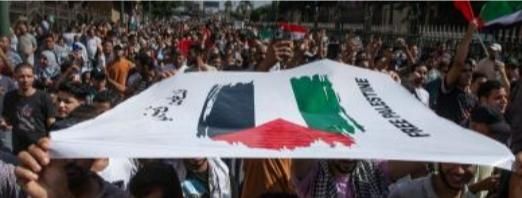
I would like to
conclude my reflections on Israel’s brutal war in Gaza by quoting something that
William Gladstone said in the House of Commons in 1876. He was at that time the
leader of the Liberal opposition; the Tory prime minister was Benjamin
Disraeli. The context for the speech was a series of hideous atrocities
committed by soldiers of the Ottoman Empire against civilians in Bulgaria.
Gladstone’s speech
has seared itself in my memory since I was an 18-year-old schoolboy in London
doing A-level British history. The key passage went as follows: “Let the Turks
now carry away their abuses in the only possible manner, namely, by carrying off
themselves. The Zephtiehs and their Mudirs, their Bimbashis and the Yuzbashis,
their Kaimakans and their Pashas, one and all, bag
and baggage, shall, I hope, clear out of the province they have desolated and
profaned.”
This is rather how I
feel about the atrocities perpetrated by Israel in the Gaza province today.
For updates click hompage here